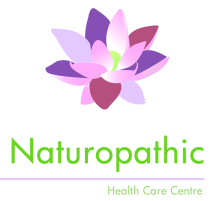|
What is the difference between Hay Fever, Allergic Rhinitis and Sinusitis?
Remember that “itis” normally refers to infection. So when we think of sinusitis, we know that 80% of cases is a viral infection causing inflamed mucous membranes, over production of mucous and congestion. About 20% of cases are caused by bacteria. Hay Fever, seasonal allergy and allergic rhinitis all refer to an overreaction of the immune system to a harmless substance like pollen, resulting in a histamine secretion. Histamine reaction is your immune system’s way of getting rid of the allergen. As a result of that, your mucous membranes become inflamed, red and swollen. A watery discharge streaming out of the nose and the eyes. Eyes are red and itchy and a lot of sneezing may occur. Your body is now really trying to do you a favour by getting rid of the invader. Furthermore, your immune system is not stupid. It has a clever way of dealing with its “fears”It produces little “guards” by the name of immunoglobulins (Ige). Next time when it notices some pollen dust, cat hair, etc., those antibodies are ready instantly. Before you even know that spring is in the air, the whole cascade of reactions take place and you sit with your watery eyes, runny nose and your sneezing. Treatment Conventional treatment includes.
Simple Steps for Managing Hay Fever There are several self-help measures that cost very little which you can do yourself to help with hay fever. They are:
Homoeopathic approach In homoeopathy, we treat by the law of similars. “Homeopathic Law of Similars is based on certain characteristic symptoms being the key to choosing a remedy. A substance which may in a large dose cause undesirable symptoms, can in homeopathic potency repel these similar symptoms out of your system and the body rebalances and heals. Law of Potentization-homeopathy uses the smallest dose to effect a cure. By extreme dilution and Homeopathic potentization, curative properties are enhanced and poisonous and undesirable side effects ameliorated.” By now you should be able to think about something that you have in your own kitchen that causes burning , watery eyes and runny nose, causing you to run for an open door, looking for some fresh air …. Yes chopped onion. Our homoeopathic remedy for these symptoms would be Allium Cepa, which is nothing other than red onion. Allium Cepa is prescribed for exactly that. Onions and garlic can be used for their homeopathic effect – the symptoms they cause, they can also treat. Both contain natural compounds that reduce the inflammation of hay fever. Add them liberally to your meals or, if you are up to it, eat them by themselves to reduce nasal irritation and streaming eyes. In our arsenal we also have a few other remedies that are well indicated in the treatment of hay fever.
Your homoeopayhic practitioner Because you may find it difficult to sort through your symptoms and all the different remedies available, an appointment can be made with a homeopath that will assess your symptoms in full and make a constitutional prescription to help you get on top of the problem once and for all. Reference:
0 Comments
Leave a Reply. |
AuthorsDr. Marike de Klerk Categories
All
|
All rights reserved Naturopathic Health Care Centre
ADDRESS: No 13 Hazelwood Road, Hazelwood, Pretoria
TELEPHONE: 012 460 9216
PAIA Manua
Website design and digital marketing by Plan Me Pretty (PTY) Ltd
TELEPHONE: 012 460 9216
PAIA Manua
Website design and digital marketing by Plan Me Pretty (PTY) Ltd

 RSS Feed
RSS Feed